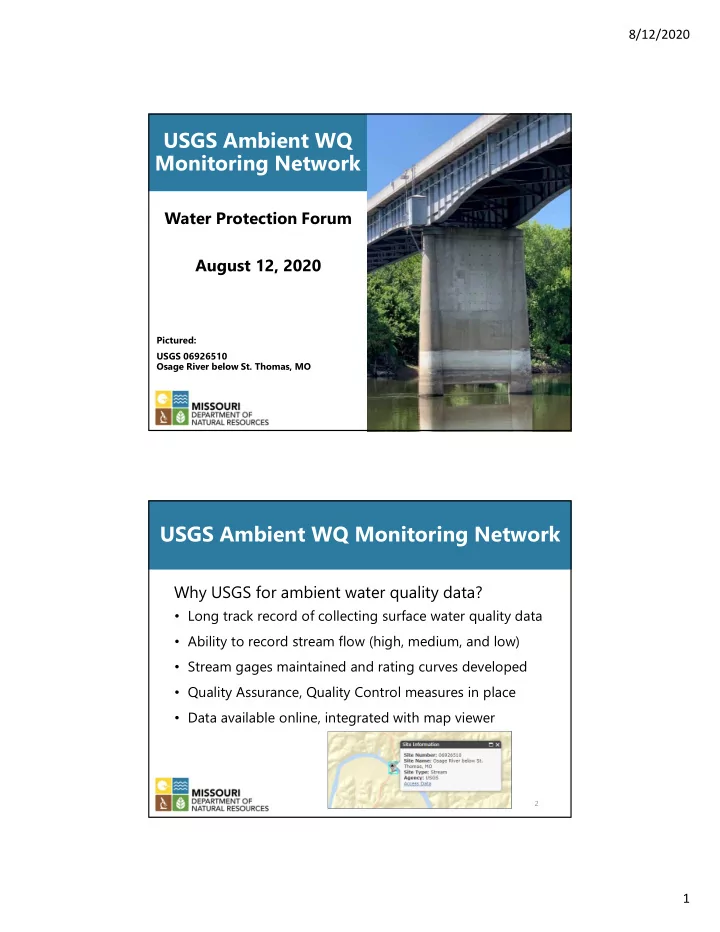

8/12/2020 USGS Ambient WQ Monitoring Network Water Protection Forum August 12, 2020 Pictured: USGS 06926510 Osage River below St. Thomas, MO 1 USGS Ambient WQ Monitoring Network Why USGS for ambient water quality data? • Long track record of collecting surface water quality data • Ability to record stream flow (high, medium, and low) • Stream gages maintained and rating curves developed • Quality Assurance, Quality Control measures in place • Data available online, integrated with map viewer 2 1
8/12/2020 USGS Ambient WQ Monitoring Network Ambient monitoring sites believed to have water quality that represents streams in the region due to likeness in watershed geology, hydrology, and land use. • Not reference sites, but representative of the region • Provide a watershed-based perspective of water quality 3 USGS Ambient WQ Monitoring Network DNR provides funding to USGS for an ambient stream network monitored between 4 to 12 times per year • Network includes nearly 70 sites statewide • Monitors physical, chemical, and bacteriological constituents • Six sites sampled for range of pesticides • Two sites on Missouri River use sondes to collect continuous nitrate data from spring to fall (St. Joseph & Hermann) EST. 1964 4 2
8/12/2020 USGS Ambient WQ Monitoring Network Physical, chemical, and bacteriological sampling • Water temperature, air temperature, discharge, specific conductance, pH, alkalinity, dissolved oxygen, % saturated oxygen, E. coli, fecal coliform • Trace metals and major ions • Total Residue • Nutrients 5 USGS Ambient WQ Monitoring Network 6 3
8/12/2020 USGS Ambient WQ Monitoring Network Data collected from the ambient network are used to inform department processes and decisions. • 303(d) List • 305(b) Integrated Report • TMDL Development and Implementation • Nonpoint Source Management Plan Implementation 7 USGS Ambient WQ Monitoring Network Data collected from the ambient network are used to inform department processes and decisions. • Water Quality Standards Development • Operating Permit Effluent Limit Derivation 8 4
8/12/2020 USGS Ambient WQ Monitoring Network Data collected from the ambient network are used for “big picture” projects, such as nutrient loading. • MO Nutrient Loss Reduction Strategy • Hypoxia Task Force 9 Questions? 10 5
Recommend
More recommend